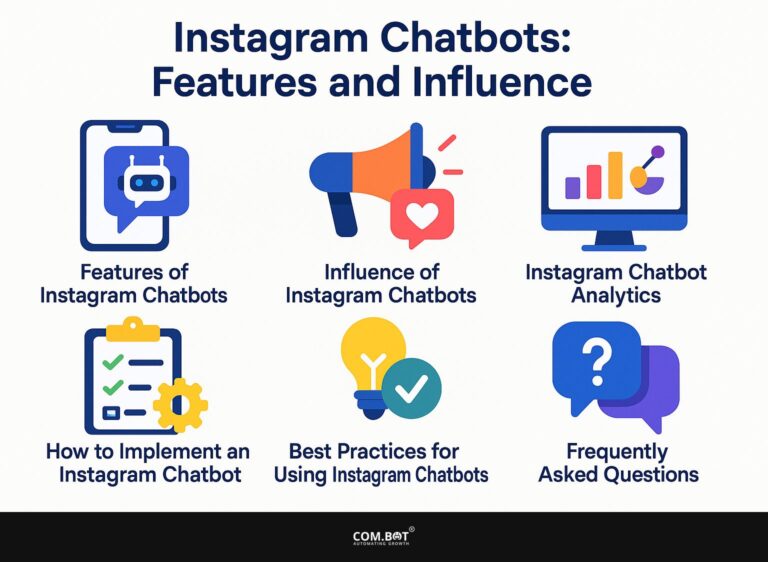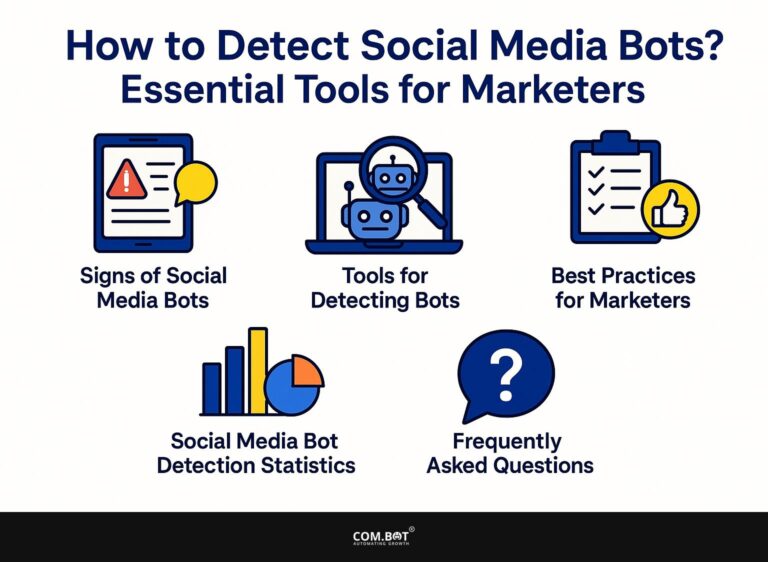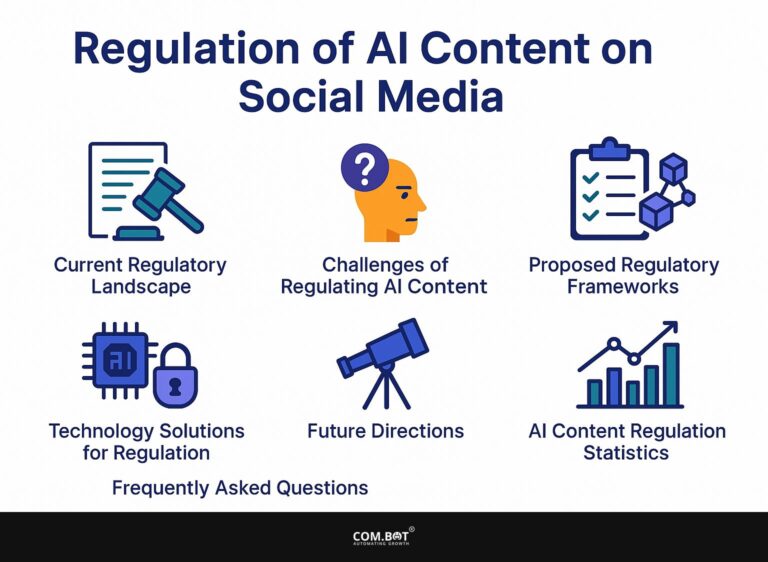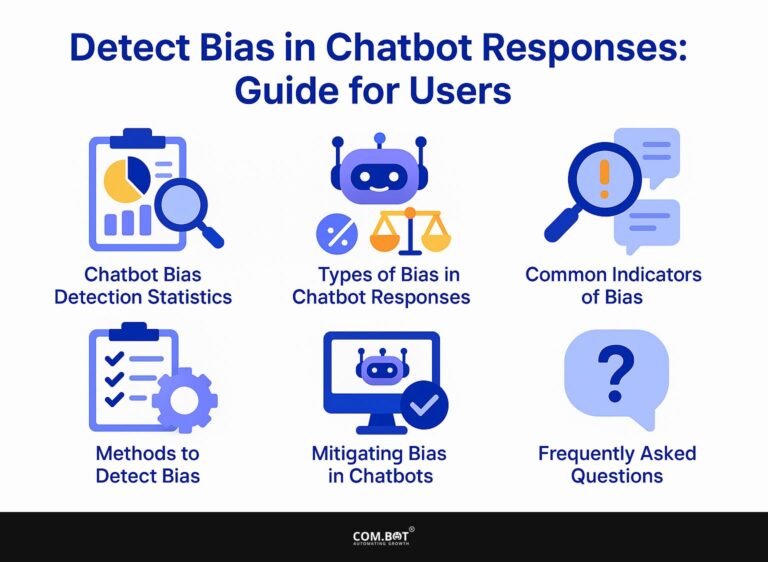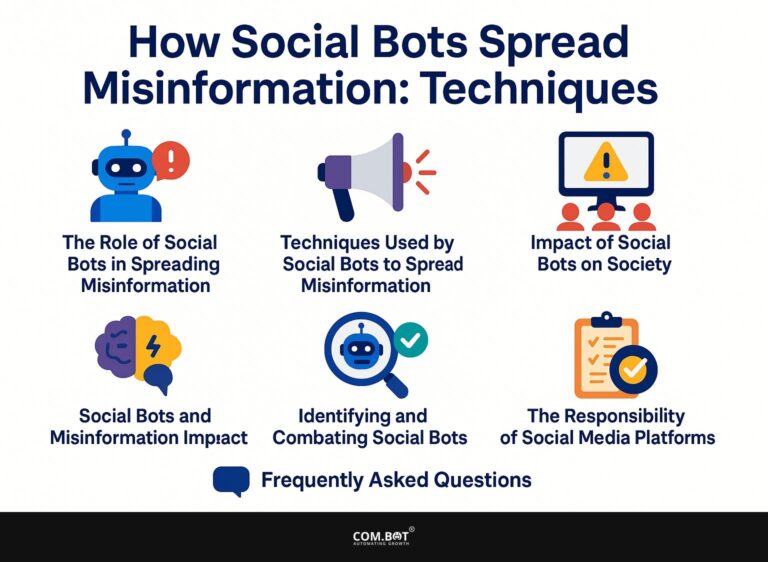AI Bots: Impact on Misinformation and Mitigation Strategies
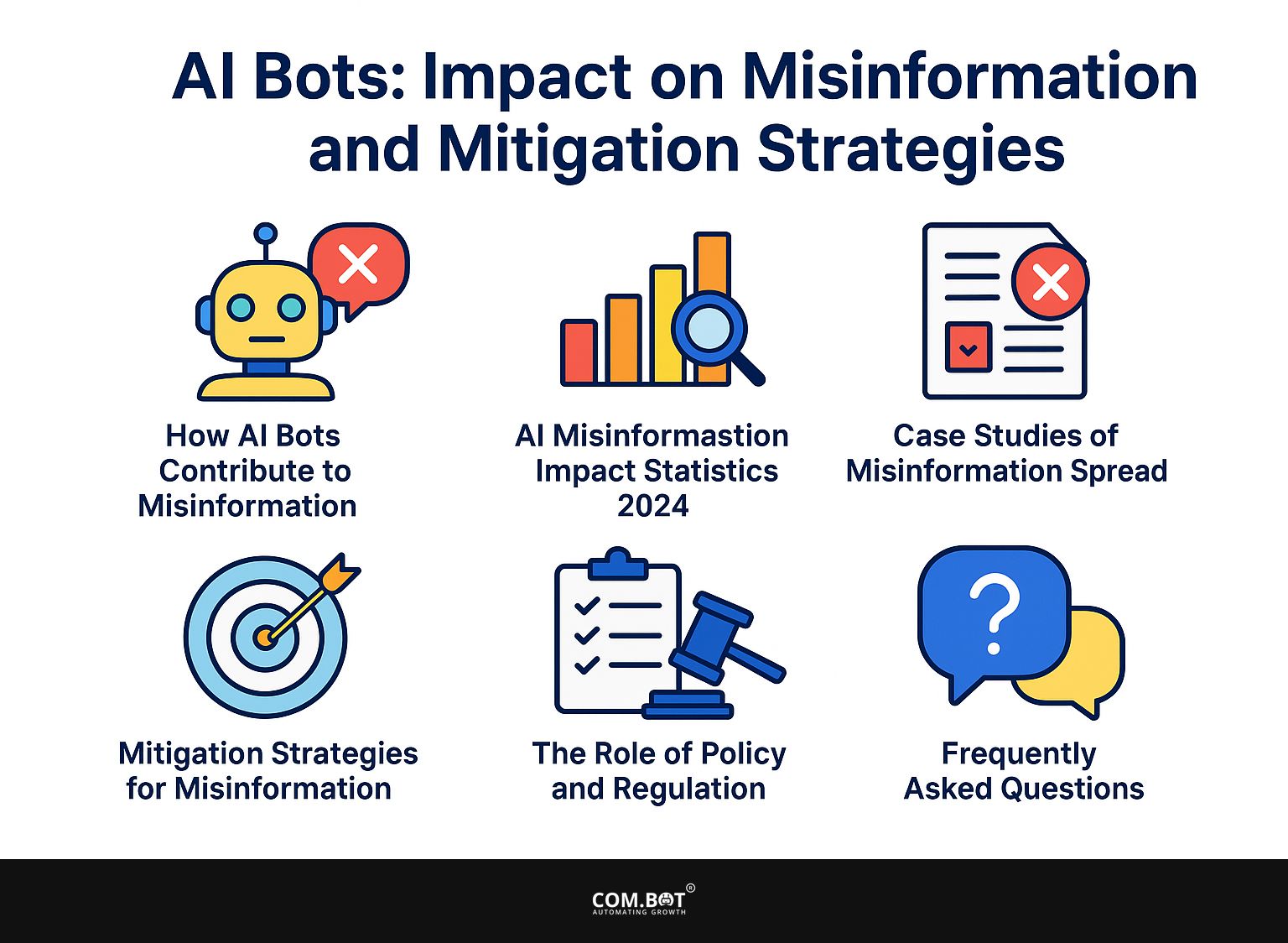
In a time when AI bots can quickly spread false news, knowing how they affect misinformation and disinformation is important. Researchers like Walid Saad and Cayce Myers at Virginia Tech are exploring the dual-edged nature of these technologies, revealing how they both contribute to and combat the information crisis.
This article explains how misinformation powered by AI works and presents practical ways to reduce its impact on public discussions.
Key Takeaways:
- AI bots are important in spreading false information by creating content automatically and increasing its reach on social media.
- Misinformation spread by AI bots can have serious consequences, such as influencing political campaigns and public health crises.
- Mitigation strategies for AI bots include AI-based detection tools and human oversight and intervention, while government policies and regulations can also help address the issue of misinformation.
- 1 How AI Bots Contribute to Misinformation
- 2 AI Misinformation Impact Statistics 2024
- 3 Case Studies of Misinformation Spread
- 4 Mitigation Strategies for Misinformation
- 5 The Role of Policy and Regulation
- 6 Frequently Asked Questions
- 6.1 1. What are AI bots and how do they impact misinformation?
- 6.2 2. How do AI bots contribute to the spread of misinformation?
- 6.3 3. Can AI bots be used for good in combating misinformation?
- 6.4 4. What are some strategies for mitigating the impact of AI bots on misinformation?
- 6.5 5. Are there any regulations or laws in place to address the use of AI bots in spreading misinformation?
- 6.6 6. How can individuals protect themselves from falling victim to AI bots spreading misinformation?
1. Definition of AI Bots
AI bots use algorithms and machine learning to handle tasks like creating content and interacting on social media. They work on platforms such as Twitter and Facebook. These bots can make tasks easier by managing interactions and creating content without human intervention.
For example, ChatGPT can generate blog posts by analyzing existing content and producing customized articles, while Sora focuses on social media, scheduling posts and responding to comments in real-time.
To implement these tools, start by integrating ChatGPT into your content management system for seamless article generation. Simultaneously, set up Sora to manage your social media interactions, reducing the time spent on manual responses and ensuring consistent engagement with your audience.
2. Overview of Misinformation
Misinformation encompasses false or misleading information that spreads rapidly, often leading to serious consequences in areas like public health and political discourse.
Two primary types of misinformation are fake news and disinformation. Fake news often consists of fabricated articles designed to mislead readers, while disinformation involves the intentional spread of false information to deceive.
The COVID-19 pandemic highlighted their societal impact, as myths about the virus and vaccines proliferated, undermining public trust in health officials.
To combat misinformation, enhancing digital literacy is essential. This involves showing people how to check sources, think critically about information, and spot biases, helping them understand and manage complicated information. As mentioned, techniques employed by social bots significantly contribute to the spread of misinformation, which you can explore further in our analysis of how social bots spread misinformation.
How AI Bots Contribute to Misinformation
AI bots worsen the spread of false information by producing content automatically and spreading it widely on social media, leading to a tangled network of misleading stories. To understand the mechanisms behind how social bots spread misinformation, take a look at the techniques outlined in our detailed guide.
AI Misinformation Impact Statistics 2024
AI Misinformation Impact Statistics 2024
The AI Misinformation Impact Statistics 2024 This section, while not having specific datasets, highlights a major issue today-misinformation spread by Artificial Intelligence (AI). This emerging issue has far-reaching consequences across various sectors, including media, politics, and public health.
AI-driven misinformation spreads through social media and online platforms, using advanced algorithms to quickly create and share fake stories. These technologies can create deepfakes and convincing yet false content, making it harder for people to tell what is real and what is not. The lack of specific data in this part shows the difficulty in measuring this changing threat. It also indicates the need for continuous research and study to fully understand its size and effects.
- The potential impact on political processes is significant, as AI-generated misinformation can influence public opinion and voting behaviors, threatening the integrity of democratic systems.
- In public health, misinformation about treatments or vaccines propagated through AI can undermine trust in medical institutions and lead to harmful health outcomes.
- The media industry faces challenges in maintaining credibility as AI tools become instrumental in both creating and combating misinformation.
Tackling AI-driven misinformation needs different strategies. This includes developing AI systems that can detect and mitigate false information, creating regulations to govern the ethical use of AI, and educating the public about the potential dangers of misinformation. It is important for governments, tech companies, and community groups to work together to handle these complicated problems effectively.
1. Automated Content Generation
With the help of sophisticated AI software, automatic content generation produces thousands of articles each month. This often makes it difficult to distinguish between genuine journalism and false information.
AI tools, such as OpenAI’s GPT models, are capable of generating unique articles at scale-one model can produce up to 4,000 words per minute. They can also be misused, notably in creating deepfake text that mimics real authors.
To maintain ethical use, organizations should implement guidelines ensuring transparency about AI-generated content. This involves clearly marking AI works and regularly checking the results. Using software like Grammarly can help maintain quality and clarity in content made by these systems.
2. Social Media Amplification
Social media sites spread false information by using algorithms to promote eye-catching content, often focusing on user interaction rather than truthfulness. This prioritization was notably evident during the 2016 U.S. presidential election, where misleading narratives gained traction through likes and shares.
Case studies show that posts with emotionally charged language attracted more interactions, leading algorithms to favor them for wider distribution.
To combat this, users can verify information using tools like Snopes and FactCheck.org. Worth exploring: how social bots spread misinformation using various techniques can provide deeper insight into the mechanisms behind these practices.
Social media literacy campaigns can educate audiences on recognizing credible sources and questioning sensational claims, thereby reducing the spreading of misinformation in their networks.
Case Studies of Misinformation Spread
Looking at real-world examples shows the different situations where false information spreads, affecting political campaigns and public health efforts.
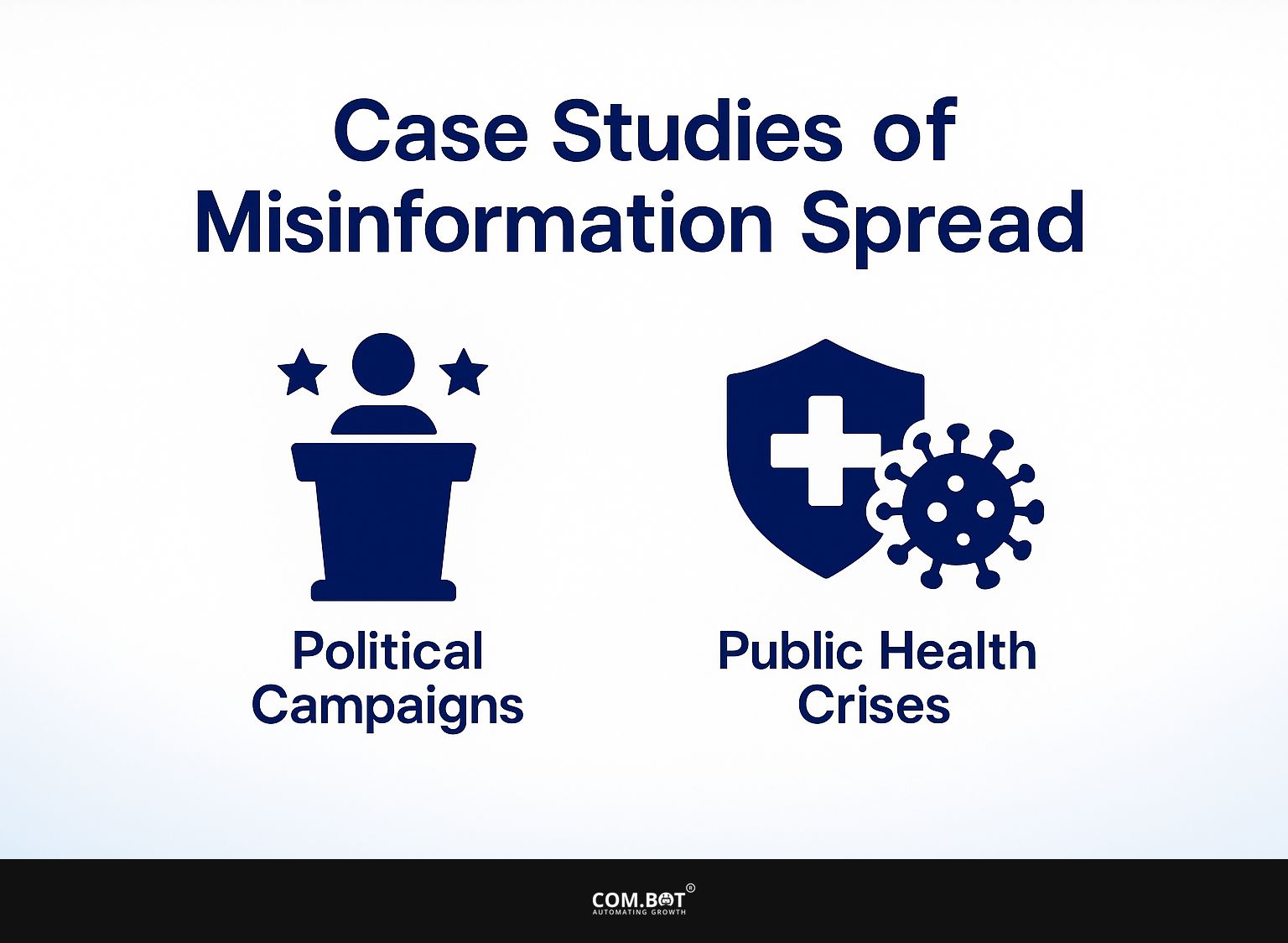
1. Political Campaigns
Political campaigns have increasingly become battlegrounds for misinformation, with targeted disinformation campaigns influencing voter perceptions and behaviors.
During the 2016 U.S. elections, tactics included social media bots disseminating false narratives at an alarming rate. For instance, accounts linked to foreign entities shared misleading articles that exploited divisive issues like immigration. Campaigns used data analysis tools, like Cambridge Analytica, to aim ads with specific messages, increasing their effect.
To counter misinformation, fact-checking organizations like Snopes and Politifact provided tools for voters to easily verify claims. Using these resources helps people tell the difference between truth and manipulation online.
2. Public Health Crises
During public health crises like COVID-19, misinformation can lead to harmful behaviors, misinformation about vaccines being a prime example of its dire consequences.
Vaccine hesitancy surged as false information circulated on social media platforms, undermining public trust in health authorities. To address this issue, organizations used tools such as CrowdTangle and Hoaxy to monitor false information spread and study its effects.
For instance, fact-checkers often employed Google Trends to identify spikes in vaccine-related searches alongside misinformation campaigns, allowing for targeted public health messaging. By dealing with concerns directly and sharing correct information, health agencies can reduce the risks linked to false information, helping more people make informed choices.
Mitigation Strategies for Misinformation
To decrease false information, we need different methods, using AI tools and human checks to make sure content is accurate. This approach has significant implications for content strategy-our framework for Meta AI’s role in content moderation demonstrates the practical application.
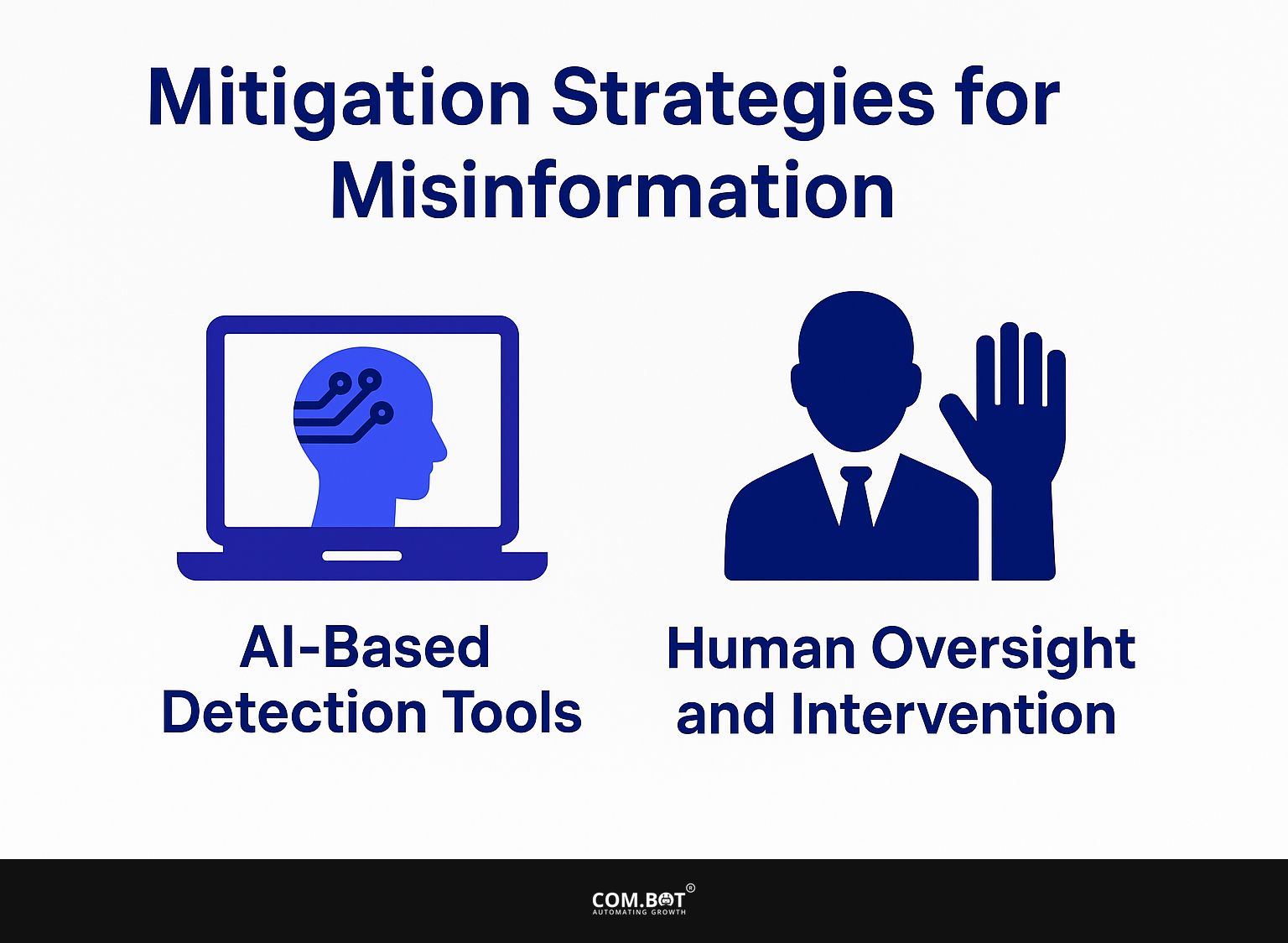
1. AI-Based Detection Tools
AI-based detection tools, such as FactCheck.ai and NewsGuard, help identify and flag misleading content, enhancing media trustworthiness. Tools like FactCheck.ai use natural language processing to check how trustworthy articles are, with an accuracy rate of 85% in spotting false information.
NewsGuard, on the other hand, manually reviews sources and assesses them based on journalistic standards, resulting in a 90% success rate. Another useful tool is Media Bias/Fact Check, which sorts news sources by their bias and trustworthiness. This helps users identify unreliable information more easily.
By using these tools, users can successfully find their way through the complicated media scene and make well-informed choices about the content they watch or read.
2. Human Oversight and Intervention
Even with progress in AI, people must check information to keep it correct and clear. During the COVID-19 pandemic, fact-checkers played an important role in verifying information shared on social media.
Websites like Snopes and FactCheck.org used people’s knowledge to check questionable statements, greatly cutting down on the spread of untrue information.
Incorporating tools like CrowdTangle can help track trending topics, while human reviewers analyze these conversations for accuracy. This mix of technology and human judgment guarantees that the information shared is trustworthy and suitable, creating a better-informed audience.
The Role of Policy and Regulation
Rules and regulations help combat false information, make sure AI is used responsibly, and hold platforms accountable for harmful content.
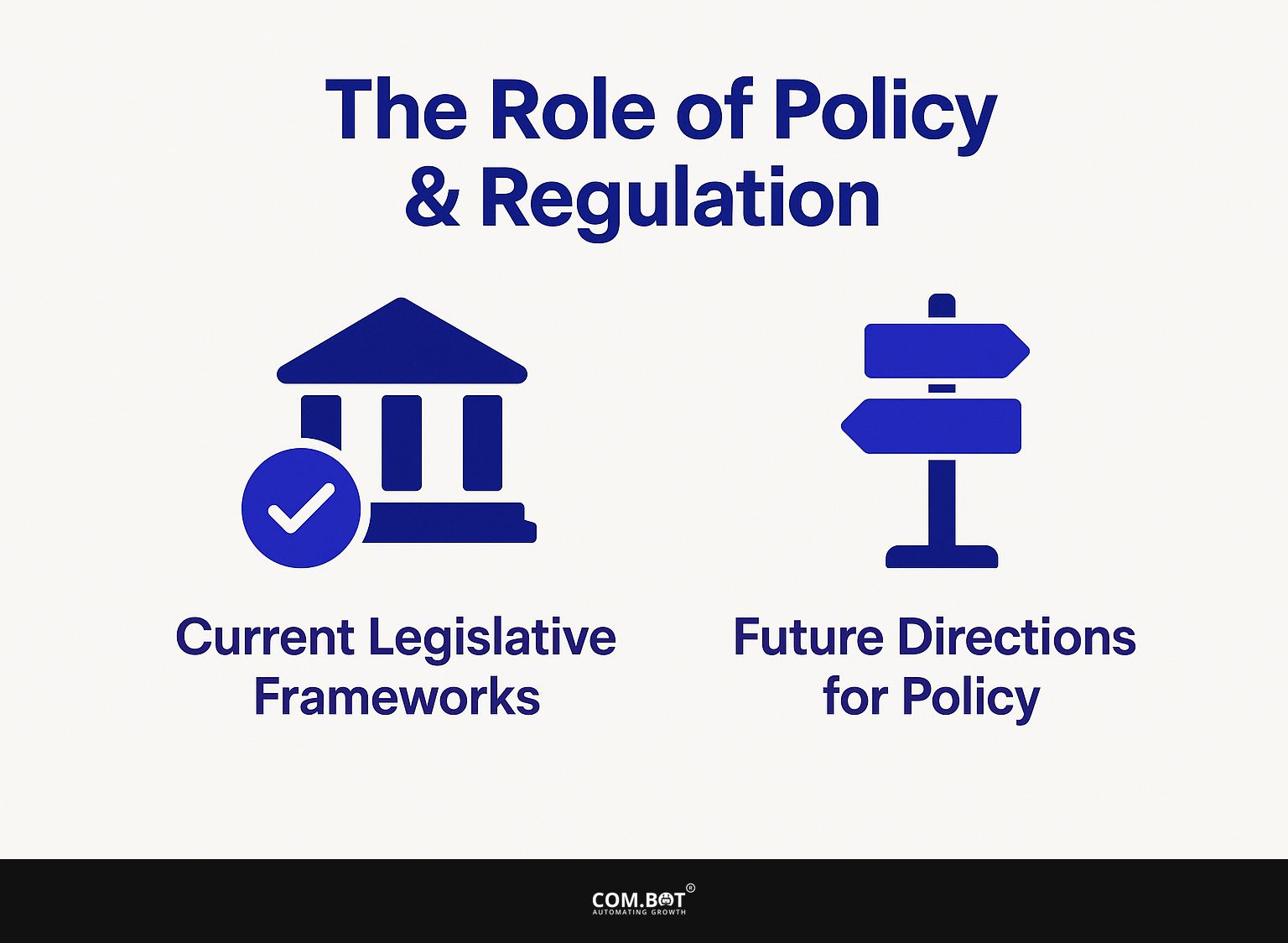
1. Current Legislative Frameworks
Existing laws, like the Communications Decency Act, set rules for dealing with false information online, but they usually fail to fully regulate the issue.
Recent actions, such as the EU’s Digital Services Act, intend to make platforms responsible by setting tough rules on false information. This legislation requires transparency in algorithms and user data management, ensuring that platforms actively address harmful content.
The Honest Ads Act seeks to regulate political ads on social media by requiring transparency about who is funding them. Pushing for stronger laws and backing groups that focus on online rights can improve these efforts and encourage responsibility on internet platforms.
2. Future Directions for Policy
Policies should balance free speech with holding technology responsible to tackle misinformation issues effectively. One option is to establish stricter guidelines for content created by AI, clarifying how algorithms choose news.
Experts suggest that these regulations could include mandatory labeling for AI-generated articles, enabling consumers to distinguish between human and machine-produced information. For instance, platforms could be required to disclose the source and method of content creation clearly.
Running public awareness campaigns to teach people how to spot false information can work alongside these rules, creating a more knowledgeable public. In the end, using both rules and teaching may work best.
Frequently Asked Questions
1. What are AI bots and how do they impact misinformation?
AI bots, or artificial intelligence bots, are computer programs designed to mimic human behavior and interact with users. They can be used to spread false information by increasing its reach and influencing online discussions.
2. How do AI bots contribute to the spread of misinformation?
AI bots can be set up to make and distribute a lot of content, which makes it hard for people to tell what is true and what is not. They can also target specific groups or individuals to spread misinformation and manipulate public opinion.
3. Can AI bots be used for good in combating misinformation?
Yes, AI bots can be used to identify and flag potentially false information, helping social media platforms and fact-checkers to quickly identify and remove misinformation. They can also be used to educate users on how to spot and avoid misinformation.
4. What are some strategies for mitigating the impact of AI bots on misinformation?
The first step is to improve the detection and removal of AI bots by social media platforms. This can be done through the use of AI technology itself. Teaching users how to identify and report AI bots can help reduce their influence.
5. Are there any regulations or laws in place to address the use of AI bots in spreading misinformation?
Currently, there are no specific regulations or laws addressing the use of AI bots in spreading misinformation. Some countries have laws that prohibit using automated programs to influence public opinion or to commit fraud. Social media platforms also have their own policies and guidelines for dealing with bots.
6. How can individuals protect themselves from falling victim to AI bots spreading misinformation?
Individuals can protect themselves by being cautious and verifying information from multiple sources before sharing it. They can also use browser extensions or tools that can identify and block AI bots on social media platforms. It is also important to educate oneself on how to spot and avoid misinformation online.

